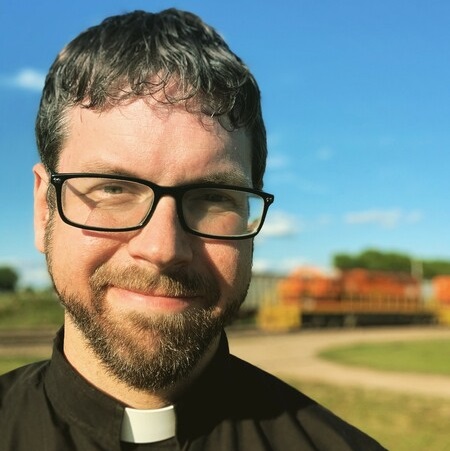Ash Wednesday contains a paradox. First, we hear from Jesus in Matthew 6 “beware of practicing your piety before others.” Then we also place a cross of ashes on our brows in one of our most outwardly visible acts of piety.
Of course, paradoxes are found in many aspects of the Christian faith. These will be familiar to anyone who reflected on the truth claims of Christianity:
- How can we believe that God is one God in three persons?
- How is it that Jesus can be both fully divine and fully human?
- How are we simultaneously saints and sinners, completely bound and totally free?
Piety or proclamation?
In preparing for Ash Wednesday, faithful preachers will be careful to connect this practice with repentant grief rather than prideful arrogance. When we place ashes on our heads, we are not proclaiming, “Look at how good and righteous and holy we are.” Rather, we are saying to the world that we are broken, sinful, and mortal.
We are remembering that, apart from God’s life-giving grace, we are indeed dust returning to dust. This does not fully resolve the paradox, but rather is faithful to it. This must be true of all our faith practices. Even as we are called to share our faith in Jesus, we must do so in a way that points, not to our own piety, but to our salvation in Christ alone.
Ashes to Go: paradox in practice
In my context, a small town of about 5,000 people on the prairie of southwestern Minnesota, we’ve added another paradox to this already paradoxical faith practice by offering “Ashes to Go” every year on Ash Wednesday since 2018.
At face value, “Ashes to Go” makes no sense. Lent is a season in which we are called to enter into intentional practices of repentance and renewal. These practices, by their nature, cannot be done quickly or taken lightly.
Anyone conducting ministry today does so within the reality of a postmodern, highly mobile, increasingly secularized culture. It’s a culture that is less and less accommodating to the traditional rhythms of life in the church.
Engaging a fast-paced world
“Ashes to Go” does not seek to resolve this paradox of a contemplative faith in a fast-paced world, but is an attempt to faithfully engage it. Rather than retreat into our building, waiting for people to conform to “the way we’ve always done it,” we trust that the Holy Spirit is still working to meet people where they are with an invitation to an ever-deepening life of faith.
With this as our goal, we pondered, wondered at, and wrestled with these questions:
- Is it possible to make the practice of the imposition of ashes accessible to people in a new way while remaining faithful to its original purpose?
- Will this new way of engaging in this practice cheapen the experience or lead people to misunderstand its meaning?
- And, in moments when we were tempted to think of the impact on our congregation and others in the area, would this discourage attendance at regular Ash Wednesday services?
In response to the first two questions, we crafted a “Brief Order for Confession and the Imposition of Ashes,” based on the “Individual Confession and Forgiveness” and “Ash Wednesday” liturgies found in our denomination’s hymnal, Evangelical Lutheran Worship.
Proclaim the gospel through an act
We have found that this is effective in providing a time of reflection and penitence. It that can be just as meaningful for participants as the imposition of ashes in a traditional setting. And, in some ways, it has the potential to be more meaningful. The interaction is much more personal. It requires asking the person’s name and, at some level, questioning their motivation for engaging in this practice. It invites conversation that can be very pastoral and powerful. Stories are shared. Occasionally, tears are shed. These interactions are often with people who have not entered a church in a long time for many reasons. They have received this opportunity to practice their faith, even for a few moments, in this seemingly small way. It’s a sign that they still matter and have not been forgotten.
The Gospel is proclaimed through this act.
As for the admittedly self-centered third question regarding the ramifications of “Ashes to Go” on things like attendance and giving, we have seen no appreciable drop in either in our congregation. In fact, we have heard some people attending our traditional soup supper and worship service say, “I totally forgot this was today until I saw the Ashes to Go!”
Draw attention to God’s grace
We have also had many people from our congregation express gratitude for the opportunity to engage in this spiritual practice. This is especially true when their work, activities, or other factors would have precluded their attendance at our worship services.
It’s not perfect, but we’ve found “Ashes to Go” to be one way to proclaim grace to the community. Whether ashes are shared in our sanctuary or on the street, our prayer is the same. May this practice draw attention, not to us, but to God’s grace and salvation in Christ alone.




